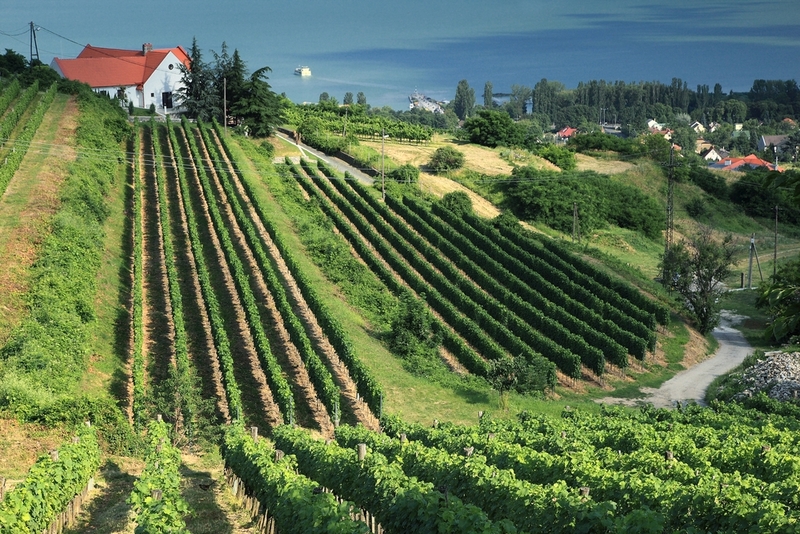Badacsony is a tiny, traditional Hungarian wine region on the northern shore of the southern end of Lake Balaton, central Europe’s largest lake. It shares its name with both the mountain which dominates the area and a village of around 1000 inhabitants.
A wide range of red and white wines are made here from a wide portfolio of both local and eastern European speciality grape varieties, plus more internationally popular wine grape varieties. The latter include Pinot Noir, Chardonnay, Merlot, Syrah, Sauvignon Blanc, Riesling and Muscat Ottonel. Several wineries also produce wines (usually fairly neutral with high acidity) from the Eastern European speciality Welschriesling (Riesling Italico).
The region is the last remaining stronghold of the aromatic white grape variety Kéknyelü. Although it has come close to extinction in the past, Badacsony Kéknyelü is now enjoying a minor revival and both wines and vines are receiving much greater care and attention. As a result, there is currently a small but growing amount of high quality Kéknyelü available on international markets.
Several other grape varieties have a connection with Badacsony. Szürkebarát is thought to be a version of Pinot Gris, which in popular legend was brought to Hungary by French monks in the 14th Century, hence its name which translates as Grey Monk. Wines made from this variety in Badacsony tend to be rich and oily, especially when the fruit is grown on warmer sites. Juhfark (known locally as Somló in reference to the Somló hill where it originates) is as rare as Keknyelu, but is holding on in certain small pockets here.
The Hungarian-made Badacsony crossings (of which Badacsony-7 and Badacsony-36 are perhaps best known) were developed in this area. Badacsony 7, which is more commonly known as Zenit was developed in the early 1950s from a pure vinifera crossing of Ezerjo and Bouvier.
Lake Balaton is a long, thin freshwater body of water almost 80 kilometers (50 miles) in length, which is often referred to as the “Hungarian Sea”. The lake plays a vital role in moderating the climate of not just the Badacsony wine region, but most of central-west Hungary.
The macroclimate in Badacsony is mild and relatively humid. The vineyards are situated on slopes of volcanic soil underneath the basalt outcrop of Badacsony mountain and overlooking the water. Topsoils are mainly a mix of clay and loess (wind-blown silt). Vines benefit from sunlight reflected off the water.
Exports do not currently reach a huge scale, and wineries here rely more on the domestic market and particularly the tourists who flock to the lake in the hot summer months. The importance of the lake is reflected in the fact that several wine regions in this area incorporate Balaton in their names (such as neighboring Balatonfured-Csopa and Balatonboglar, across the water), as do almost 30 of the local towns and villages.
The area’s winegrowing history dates back to Roman times,when Emperor Probus (reigned 276-282) introduced vineyards. As with most of Europe, much of its winemaking throughout the Middle Ages was undertaken by the Church, and it suffered greatly in the Phylloxera outbreak of the late 19th Century.



